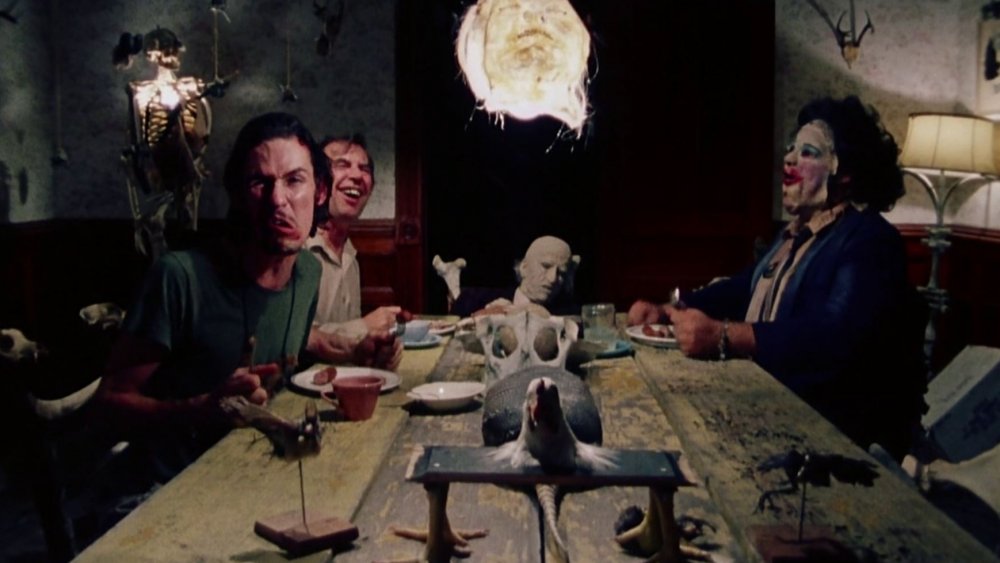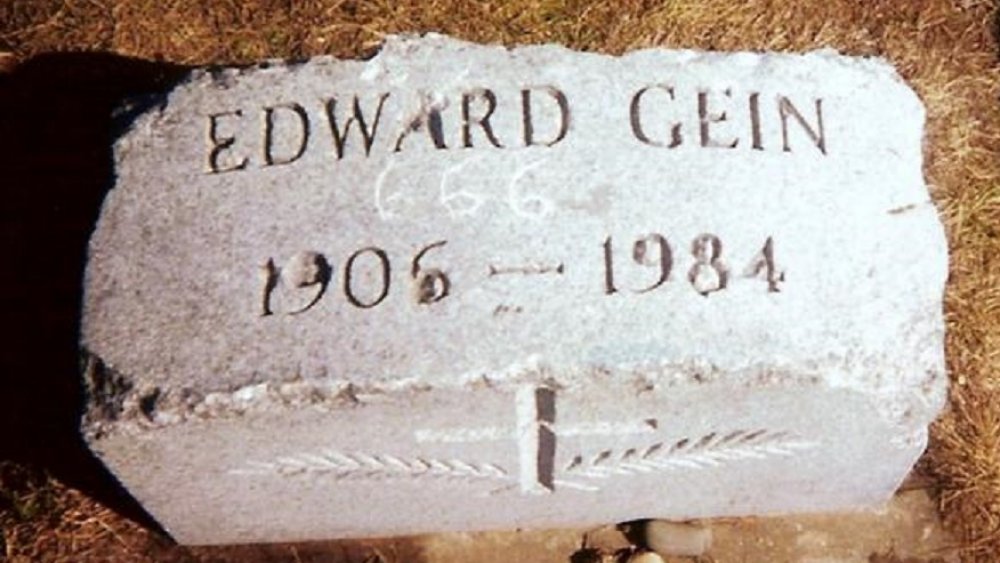The Real-Life Event That The Texas Chainsaw Massacre Is Based On
Leatherface from Texas Chainsaw Massacre is one of the most memorable — and disturbing — horror movie villains in the modern pantheon. The piggy noise-making, mask-of-human-skin-wearing, chainsaw-wielding, central-Texan recluse is so iconic that it's hard to imagine a time before chainsaws were associated with maniacal lunatics, rather than just shredding timber. Leatherface was a big reason why Tobe Hooper's $60,000 indie horror film went on to become a smash hit, per Texas Monthly, making it the highest grossing horror film ever, at the time.
The movie was promoted as being "based on a true story," an image strengthened by its understated, realistic cinematography, and deliberately no-name actors, which makes the movie's depiction of a family of countryside cannibals even more unnerving (the "dinner scene" comes to mind). In this way, Texas Chainsaw Massacre could be seen as the precursor not only to tool-torture horror, like the Saw franchise, but the found footage genre, as well, popularized through movies like the The Blair Witch Project.
While it's not true that Texas Chainsaw Massacre was explicitly copy-pasted from an actual real-life story (thankfully), there are a host of real-world elements infused into the movie, including daydreams of director Hooper's where he used chainsaws to cut through holiday shopping crowds. Most notable of all influences, though, is the serial killings of Wisconsin-born Ed Gein, who, according to Serial Killer Shop, inspired the creation of not only Leatherface, but The Silence of the Lamb's Buffalo Bill and Hannibal Lecter, as well as Psycho's Norman Bates.
My brother makes good head cheese
The true story of Ed Gein is a case of reality not only being stranger than fiction, but more repulsive. Gein is the progenitor of every modern serial killer stereotype. Fanatically religious mother with whom he lived until her death? Check. Taught from a young age about the evils of sex? Check. Asocial loner who stalked women resembling his late mother? Check. Fascination with necrophilia and dissecting human bodies? Check.
After that, things get even more grotesque. Gein, born in 1906, worked as a handyman out of a farmhouse in Plainfield, Wisconsin, per Biography. Over the years, several local women went missing, and the mystery of their disappearances came to a head on November 16, 1957, when Bernice Warden vanished from her hardware store, cash register gone, and a trail of blood leading out of the store. Her son, Frank Warden, happened to be deputy sheriff, and suspected that Gein was involved. When police arrived at Gein's house, they discovered a horrifying array of evidence regarding Gein's activities, including the decapitated corpse of Warden hanging upside in the kitchen, skulls used for bowls, lampshades and upholstery made from flesh, leggings and a corset made from skin, and nine skinned faces of women hanging on the bedroom wall. Gein evidently enjoyed wearing the skin of his victims, and pretending to be his mother.
And his late mother's room? In pristine, untouched condition. Gein spent his remaining years in mental institutions, before dying in 1984.

